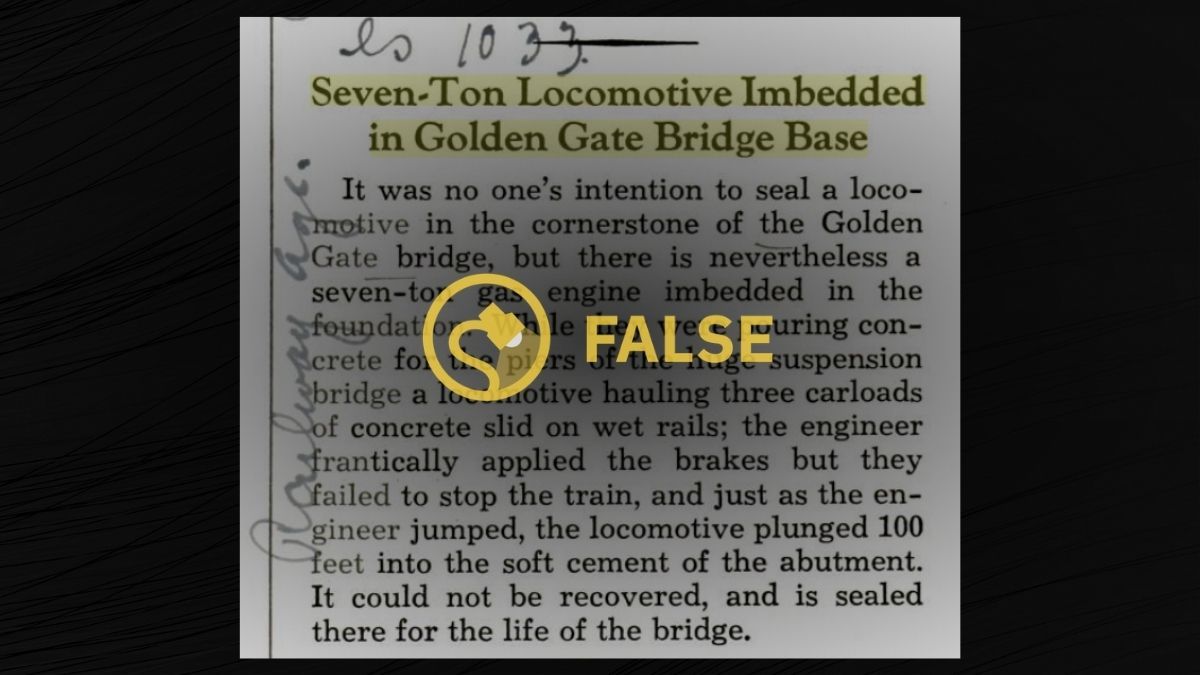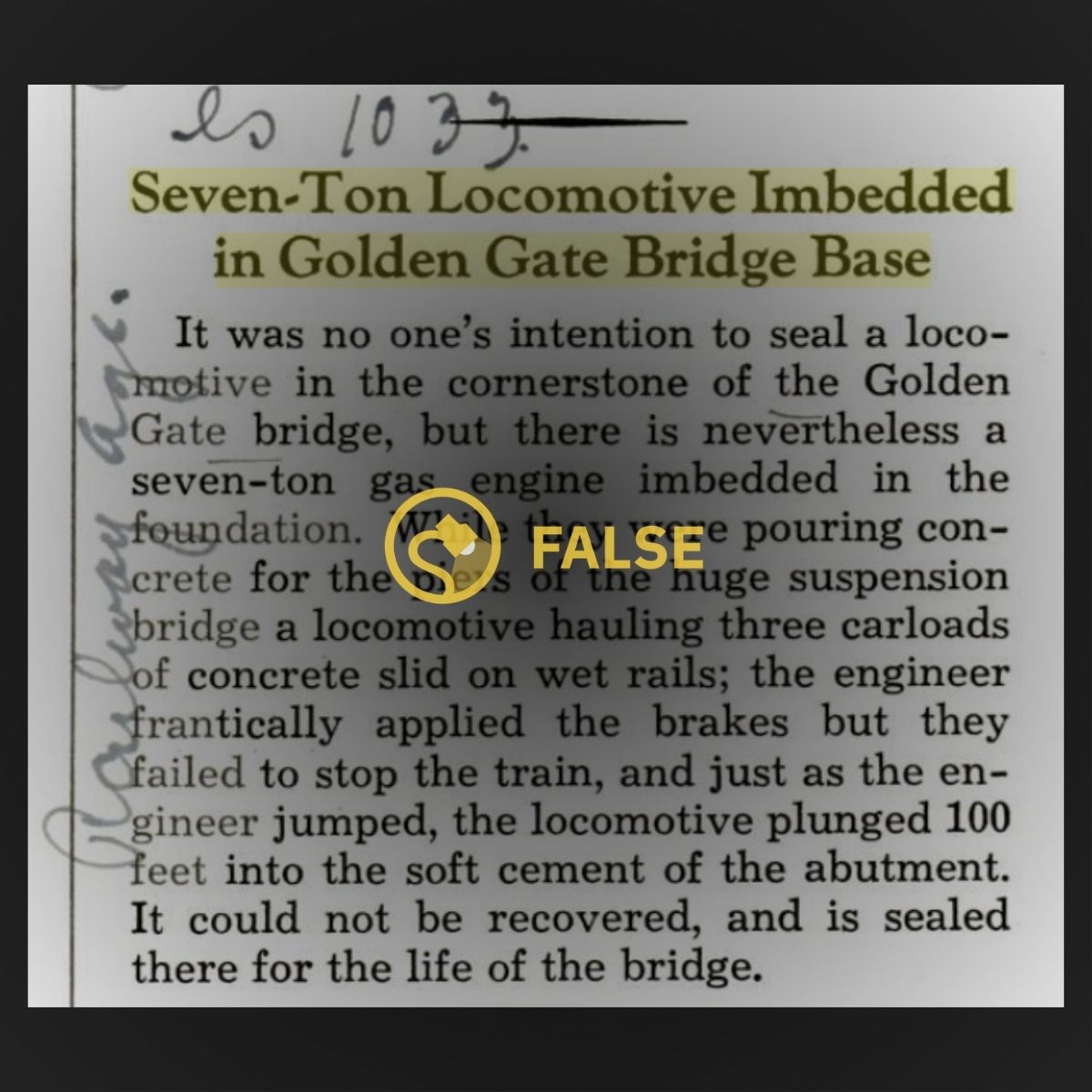The Golden Gate Bridge that crosses the San Francisco Bay is considered a marvel of 20th century engineering, with its wide span, high towers, and sweeping cables. But as the bridge was being constructed from around 1933 to 1937, there were stories about its challenges, some more outlandish than others.
Snopes readers shared one story with us, which had a very curious claim — that a train locomotive had been embedded in the foundations of the Golden Gate Bridge. It allegedly fell in during the bridge’s construction, and could never be pulled out. The post originated from a 1937 issue of Popular Mechanics magazine.
According to the article:
It was no one’s intention to seal a locomotive in the cornerstone of the Golden Gate bridge, but there is nevertheless a seven-ton gas engine imbedded in the foundation. While they were pouring concrete for the piers of the huge suspension bridge a locomotive hauling three carloads of concrete slid on wet rails; the engineer frantically applied the brakes but they failed to stop the train, and just as the engineer jumped, the locomotive plunged 100 feet into the soft cement of the abutment. It could not be recovered and is sealed there for the life of the bridge.
We spoke to experts, including the Golden Gate Bridge Highway and Transportation District’s press team, and they concluded that there is no definitive proof that such a locomotive exists in the foundations of the bridge.
A spokesperson for the Golden Gate Bridge Highway and Transportation District said they had not seen any evidence of such a thing existing in their day-to-day work on the bridge. He argued that there is a very low likelihood that the claim is correct, and pointed us to the book, “Secrets of the Golden Gate Bridge” by E.J. Knapp.
The book refers to the story as a “legend”:
Children scratch their names in cement. Bridge builders bury seven-ton locomotives in it. Or so the legend goes. Actually, they didn’t do it on purpose. The locomotive was hauling cars of cement to the Marin anchorage when the brakes failed, and it plunged into the North Pier of the Bridge. Some say they removed the wreckage. I prefer the legend.
We also reached out to Henry Petroski, a professor of both history and engineering at Duke University. He told us that he had never heard of such a story regarding the Bridge. The story was “too vaguely written,” he said, and added that a typical cornerstone would not be poured concrete. He posited, “Maybe something is buried somewhere, but in [a] cornerstone, foundation, or abutment?” He argued that it was possible that “something smaller than an entire locomotive,” could be buried there, “like a wheelbarrow.” He did not offer a definitive answer on whether this story could be accurate.
Shortly after our initial query, Denis J. Mulligan, General Manager of the Golden Gate Bridge, Highway & Transportation District, who had also served as chief engineer, confirmed through the spokesperson that there was no locomotive embedded in either the North or South Pier of the Bridge. They accessed construction records from when it was built, and concluded that no such locomotive existed.
But the Golden Gate Bridge did see accidents take place over the course of its construction. The project had been ongoing for four years without any fatalities until February 1937, when a work platform fell through the safety net placed under the bridge. According to History.com, 11 workers died over the course of constructing the bridge — an impressive feat for a time when working conditions were not the safest.
The story of the embedded locomotive echoes other long-told tales of strange mishaps on massive-scale construction projects. One such tale holds that the bodies of as many as 100 workers are entombed in the concrete used to build Hoover Dam.
Given the lack of reporting on the Golden Gate Bridge story, the skepticism expressed by experts, and confirmation from Golden Gate Bridge authorities, we rate this claim as “False.”


